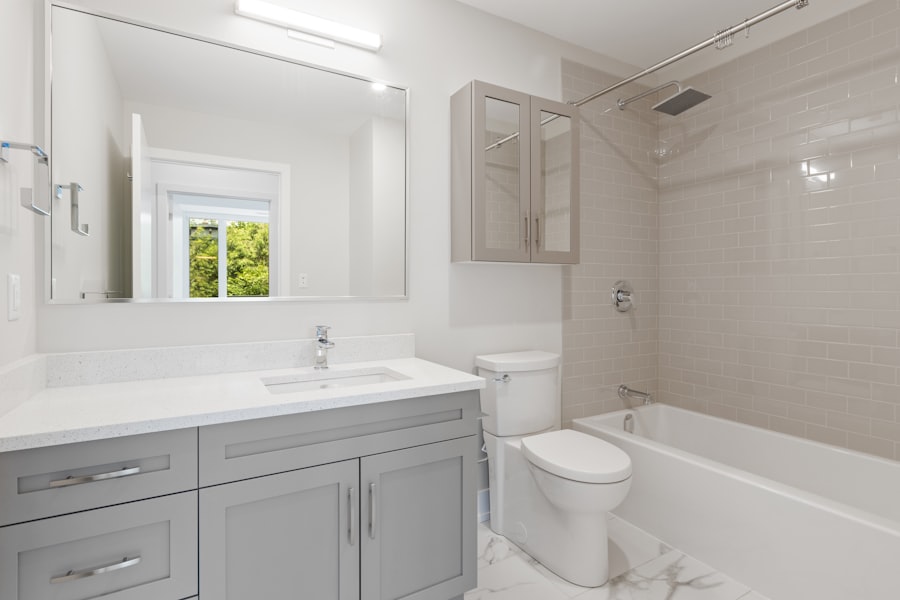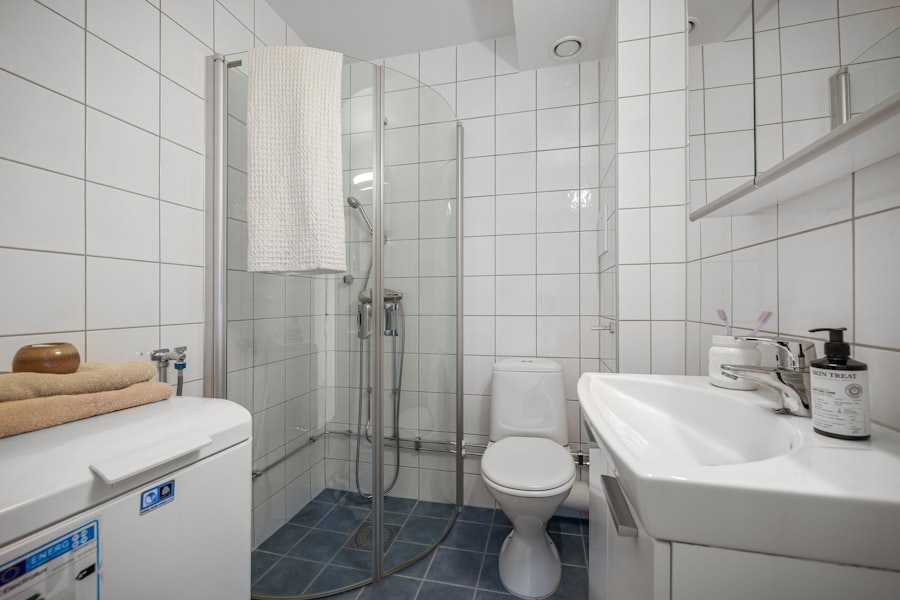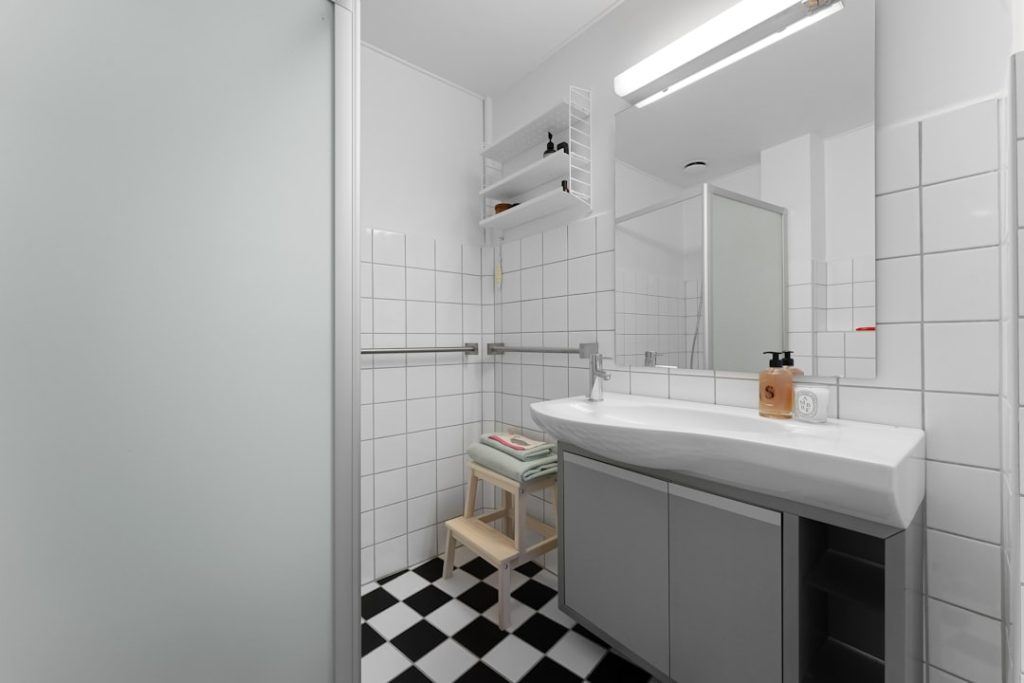When considering a bathroom addition, several factors can significantly influence the overall cost. One of the primary considerations is the size of the new bathroom. A larger space typically requires more materials, fixtures, and labor, which can drive up expenses.
For instance, a small half-bath may only need basic plumbing and minimal fixtures, while a full bath with a shower, tub, and double vanity will necessitate a more extensive layout and higher-quality materials. Additionally, the complexity of the design plays a crucial role; intricate layouts with custom cabinetry or unique tile work can add to the overall expenditure. Another critical factor is the location of the addition within the home.
Adding a bathroom adjacent to existing plumbing lines can significantly reduce costs compared to placing it far from existing water and sewer lines. The foundation type also matters; if the addition requires significant structural changes or reinforcement, this can lead to increased costs. Furthermore, local building codes and regulations can impact expenses, as compliance may necessitate additional permits or inspections, which can add to the timeline and budget of the project.
Key Takeaways
- Bathroom addition costs are influenced by factors like size, materials, labor, and location.
- Material costs vary widely depending on quality and style choices for fixtures and finishes.
- Labor expenses depend on complexity, contractor rates, and project duration.
- Hidden costs such as permits, inspections, and unexpected repairs can increase the budget.
- Budget-friendly strategies include careful planning, choosing cost-effective materials, and hiring reputable contractors.
Estimating the Cost of Materials for a Bathroom Addition
Estimating material costs for a bathroom addition involves a careful assessment of various components, including plumbing fixtures, flooring, cabinetry, and wall finishes. The choice of materials can vary widely in price; for example, standard ceramic tiles may cost significantly less than high-end marble or natural stone options. When selecting flooring, homeowners should consider durability and maintenance alongside aesthetics.
Vinyl or laminate flooring can be budget-friendly alternatives to more expensive materials like hardwood or tile. In addition to flooring, fixtures such as sinks, toilets, and bathtubs can also vary greatly in price. A basic toilet may cost around $100, while a luxury model with advanced features could exceed $1,000.
Similarly, vanities range from inexpensive pre-fabricated options to custom-built designs that can be quite costly. Homeowners should also factor in the cost of plumbing supplies, such as pipes and fittings, which are essential for installation. By carefully selecting materials that fit both their budget and design vision, homeowners can effectively manage costs while still achieving a beautiful and functional bathroom addition.
Understanding Labor Costs for a Bathroom Addition

Labor costs are a significant portion of any bathroom addition budget and can vary based on several factors, including geographic location, contractor experience, and project complexity. In urban areas where demand for skilled labor is high, hourly rates for contractors and subcontractors may be elevated compared to rural regions. For instance, labor costs in metropolitan areas like New York City or San Francisco can be substantially higher than in smaller towns or cities.
The complexity of the project also influences labor costs. A straightforward addition with minimal plumbing changes may require less labor than a more intricate design that involves relocating plumbing or electrical systems. Additionally, hiring specialized tradespeople—such as electricians or plumbers—can add to labor expenses.
Homeowners should obtain multiple quotes from contractors to ensure they are getting competitive pricing while also considering the quality of work and reputation of the contractor.
Hidden Costs to Consider for a Bathroom Addition
| Cost Category | Description | Estimated Range |
|---|---|---|
| Permits and Inspections | Fees required by local authorities for approval and compliance checks | 500 – 2,000 |
| Plumbing Upgrades | Modifications to existing plumbing to accommodate new fixtures | 1,000 – 3,000 |
| Electrical Work | Adding or upgrading wiring, outlets, and lighting for the new bathroom | 800 – 2,500 |
| Structural Changes | Reinforcing or modifying walls, floors, or foundations | 1,500 – 5,000 |
| Mold and Water Damage Repair | Addressing hidden damage uncovered during construction | 500 – 4,000 |
| Design and Engineering Fees | Costs for professional plans and consultations | 1,000 – 3,000 |
| Waste Removal | Disposal of construction debris and old materials | 200 – 800 |
| Temporary Living Expenses | Costs incurred if the bathroom is unusable during renovation | Varies |
While many homeowners focus on visible expenses when planning a bathroom addition, hidden costs can quickly accumulate and impact the overall budget. One common hidden cost is related to unforeseen structural issues that may arise during construction. For example, if the existing foundation is not adequate to support the new addition or if there are issues with mold or water damage in the existing structure, these problems will need to be addressed before proceeding with the project.
Another often-overlooked expense is the cost of permits and inspections required by local building authorities. Depending on the scope of the project and local regulations, these fees can add up quickly. Additionally, homeowners should consider potential costs associated with temporary living arrangements if the construction process disrupts daily life significantly.
This could include staying in a hotel or renting an apartment while work is being completed. By anticipating these hidden costs, homeowners can better prepare their budgets and avoid financial surprises during the renovation process.
Budget-Friendly Tips for a Bathroom Addition
For homeowners looking to keep costs down during a bathroom addition, there are several budget-friendly strategies to consider. One effective approach is to prioritize essential features over luxury items. For instance, opting for standard fixtures instead of high-end brands can lead to substantial savings without sacrificing functionality.
Additionally, choosing mid-range materials for flooring and countertops can provide a balance between quality and affordability. Another way to save money is by considering DIY options for certain aspects of the project. While major plumbing and electrical work should always be left to professionals, homeowners may be able to handle tasks such as painting or installing fixtures themselves.
This not only reduces labor costs but also allows homeowners to personalize their space further. Furthermore, shopping sales or sourcing materials from discount retailers can yield significant savings on items like tiles and vanities.
Hiring a Contractor for a Bathroom Addition

Selecting the right contractor is crucial for ensuring a successful bathroom addition project. Homeowners should begin by researching potential candidates through online reviews, referrals from friends or family, and local trade organizations. It’s essential to verify that any contractor being considered is licensed and insured to protect against potential liabilities during construction.
Once potential contractors have been identified, homeowners should conduct interviews to gauge their experience and approach to projects similar in scope. Requesting detailed estimates that break down labor and material costs can help homeowners compare bids effectively. Additionally, checking references from previous clients can provide insight into the contractor’s reliability and quality of work.
Establishing clear communication from the outset will also help ensure that expectations are aligned throughout the project.
Financing Options for a Bathroom Addition
Financing a bathroom addition can be approached through various avenues depending on individual financial situations and preferences. One common option is to use home equity loans or lines of credit (HELOCs), which allow homeowners to borrow against the equity they have built in their homes. These loans often come with lower interest rates compared to personal loans or credit cards, making them an attractive option for funding renovations.
Another financing route is through personal loans specifically designed for home improvement projects. These loans typically have fixed interest rates and repayment terms that can make budgeting easier for homeowners. Additionally, some homeowners may consider refinancing their mortgage to access cash for renovations; however, this option requires careful consideration of current interest rates and potential closing costs associated with refinancing.
Maximizing Value in a Bathroom Addition Investment
To maximize the value of a bathroom addition investment, homeowners should focus on features that appeal to potential buyers while also enhancing their own enjoyment of the space. High-quality finishes and fixtures tend to yield better returns; therefore, investing in durable materials that withstand wear and tear is wise. For example, opting for quartz countertops instead of laminate can elevate both aesthetics and longevity.
Moreover, incorporating energy-efficient features such as low-flow toilets and LED lighting not only reduces utility bills but also appeals to environmentally conscious buyers. Thoughtful design elements like adequate storage solutions and functional layouts can enhance usability and increase overall satisfaction with the space. By balancing personal preferences with market trends, homeowners can create a bathroom addition that not only meets their needs but also adds significant value to their property in the long run.




